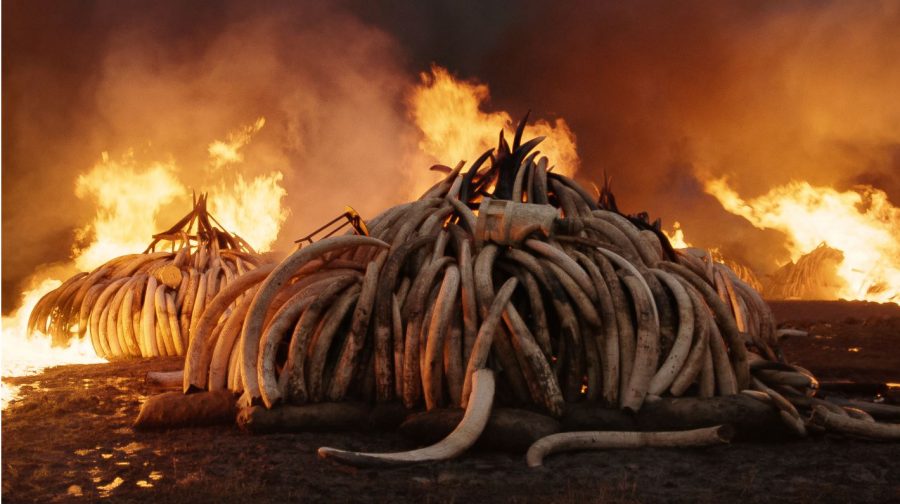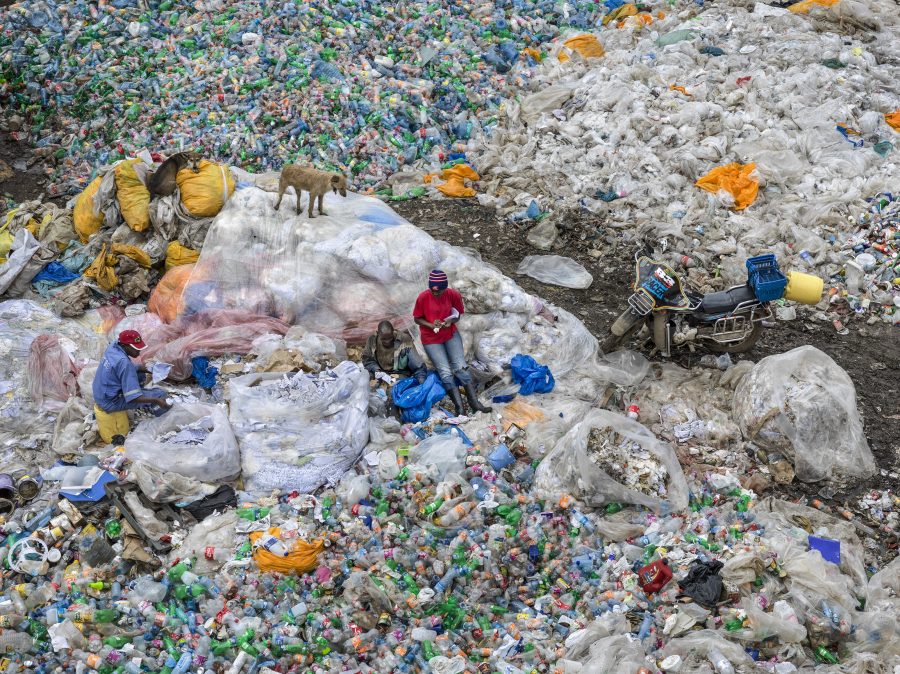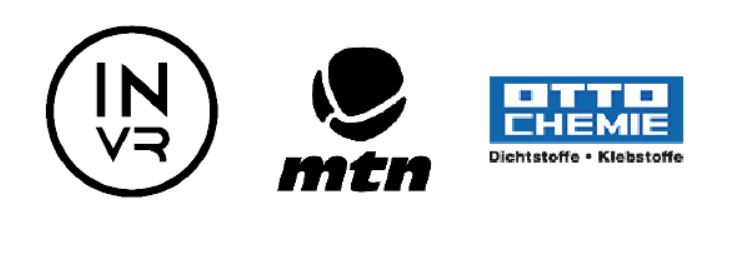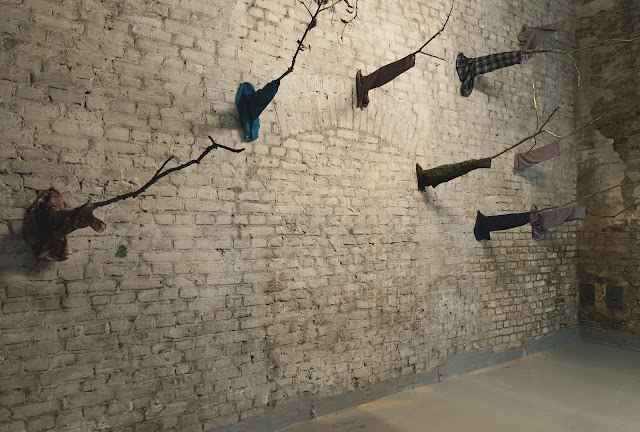Exhibitions
'Greeting to the Others'
 |
| Jazoo Yang Solo Show 'Greetings to the others', installation view @ Soma Art Space 700,2021 |
Yang presents her works created in the past few months, in the breathing gap between spurs of the pandemic. Hence “greetings to the others” do take on a sensible – as in touching - dimension to prompt us to appreciate and to embrace the weight of each chance encounter. The message is reiterated across the spectrum of materials and art forms in the current exhibition, showcasing collage, sculpture, painting and video installation. Materiality and the subtle rite of passage are the recurring themes in Yang´s work, which record her intimate dialog with urban space
Immanence / Bricks
Untamed Architecture
In
the city, urbanity IS the natural habitat. Urban nature, natural urban home and in many
other combinations are themselves oxymoron that effectually erase the line
between organic and inorganic nature of things. The thorns arrangement strikes
a chord with nature´s rhythmic patterns – in temporal and spatial sense. The
artist shaved the thorns from branches found in different parts of Berlin and
arranged them in her work, resembling their natural pattern. A smaller scale work on view was the draft of
this line of work. The piece is charged
with motions and therefore is most rhythmic.
In contrast, the grander arrangement of the thorns exhibits a group
dynamic. On closer look, or rather, on
looking awry, the thorns resemble the side view of a pointy-nosed Venetian
carnival masks or those in Noh.
In this sense, as the thorns are rendered “inorganic” as part of an
artwork, that is, as they are removed from their organic habitat, they
transition into – and not simply added to - human realm. Like human face, time matures the character
of each persona. A synergy might be
activated by the passage of time.
However it puts forth yet another piece of convincing evidence of an
interchangeable in-/ organicity that is integral to urban living.
Yang´s
creative process stems from urbanity, in which nature has a strong presence –
be it as a method or as a motif. In her
experimentation with materials and medium, her works serve as a platform for
tensions of the city to play out. And what is born out of it is the cohesion
that in turn holds the city together.
'Between Particles and Waves'
– AN EXHIBITION IN PUBLIC SPACE OF MINECRAFT
Group show in Minecraft “Between Particles and Waves” Server Address: Pro2.gamehosting.it:25580
Host : Salvatore Cinquegrana (A.K.A. Surry) Curation : Jan Vormann, Brad DowneyArtists : Jazoo Yang, Vhils, Esther Stocker, Octavi Serra, Michael Johansson, Add Fuel, John Fekner, Brad Downey, Jan VormannCollaboration : Pushkin museum, Guggenheim, Total museum, 104 Paris, Suzy Park(Curator of AGENCY RARY)
THIS EXHIBITION IS THE FIRST OF ITS KIND THAT REUNITES A GROUP OF INTERNATIONAL ARTISTS WHO ARE KNOWN FOR THEIR ARTISTIC PRACTICE IN PUBLIC SPACES IN CITIES THROUGHOUT THE WORLD. THE WORKS CREATED SPECIFICALLY FOR THIS VIRUTAL SPACE OF 28 MILLION X 28 MILLION X 256 BLOCKS WILL BE SHOWN IN THE PROCESS OF BEING CONSTRUCTED BY SURRY, A FAMOUS YOUTUBER. EVERYBODY WHO HAS ACCESS TO THE GAME IS INVITED TO IMMERSE INTO THE ENVIRONMENT AND EXPERIENCE THE ARTWORKS IN SITU. THERE WILL ALSO BE GUIDED TOURS IN DIFFERENT LANGUAGES.
During much of the last half year Brad Downey and Jan Vormann have worked together with the content creator Salvatore Cinquegrana (A.K.A. Surry) to assemble a group of international artists for an exhibition called "Between Particles and Waves". The show features works of Jazoo Yang, Vhils, Esther Stocker, Octavi Serra, Michael Johansson, Add Fuel, John Fekner, Brad Downey and Me. As the host of the show in his popular minecraft world, Surry has dedicated many hours of his time helping the artists build their works and create tangible tokens. We are all grateful that he was on board for this experiment!The server is now open : pro2.gamehosting.it:25580
Each artist was asked to apply their techniques, ideas, or strategies to the public space of this sandbox game, while exploiting every bit of the immersion this abstraction of reality provides. Virtual meshes have been put through digital blenders, voxelized into schematics and finally pasted into Minecraft biomes to serve as blueprints in the survival world of the show. Intrigued by the textures and mechanics of the entirely new set of laws of physics, the artists put up stencils in procedurally generated villages, Statues of more that 120 meter (blocks) high or test for your eyesight nested in the landscape show you the entire vision, there will be glitches and structures hovering high above sea level like big beautiful moons or nearby planets
EARTH, t.b.a.
Curated by Vanessa Souli
24. April - 4. Juli 2021
THIS EXHIBITION IS THE FIRST OF ITS KIND THAT REUNITES A GROUP OF INTERNATIONAL ARTISTS WHO ARE KNOWN FOR THEIR ARTISTIC PRACTICE IN PUBLIC SPACES IN CITIES THROUGHOUT THE WORLD. THE WORKS CREATED SPECIFICALLY FOR THIS VIRUTAL SPACE OF 28 MILLION X 28 MILLION X 256 BLOCKS WILL BE SHOWN IN THE PROCESS OF BEING CONSTRUCTED BY SURRY, A FAMOUS YOUTUBER. EVERYBODY WHO HAS ACCESS TO THE GAME IS INVITED TO IMMERSE INTO THE ENVIRONMENT AND EXPERIENCE THE ARTWORKS IN SITU. THERE WILL ALSO BE GUIDED TOURS IN DIFFERENT LANGUAGES.
EARTH, t.b.a.
Curated by Vanessa Souli
24. April - 4. Juli 2021
https://www.hal-berlin.de/ausstellung/earth/
Participating artists:
Nadine Baldow (Installation / Sculpture)Hendrik Czakainski (Installation / Sculpture)
Kai Löffelbein (Installation / Photography)
Jazoo Yang (Installation / Sculpture)
Shingo Yoshida (Video / Photography)
COVID-19, California Fires, Australian ecosystem collapse. What is going on in the world? Are we experiencing a new phase of human existence or are these terrifying phenomena still to be considered ‘natural’? How do we imagine our world to be like in some years from now and more importantly, how do we want our world to be in the future?
The exhibition EARTH, t. b. a. is to be understood as part of the Anthropocene exhibition series, conceived by curator Vanessa Souli, which explores the broader relationship of humans to their immediate, as well as global, natural and social environment. An unofficial term used to describe the current period in Earth’s history when human actions have a visible impact on the regulation of climate and the balance of ecosystems, the Anthropocene is an increasingly important concept that encompasses all aspects of human activity on Earth.
The project presents a series of scenarios of future life on Earth that oscillate between imagination and documentation. The selected works, which are mainly site-specific installations, are imaginary investigations of post-apocalyptic rural and urban landscapes as a result of human influence on nature and architecture. Specifically, the exhibition aims to generate a conversation around the following global issues:
• Environmental disasters and their impact on marginalised communities (climate change)
• Civilization waste of high-tech societies (e-waste)
• Cultural identity and memory in a globalised world (globalisation)
• Biological interventions in species (hybridisation)
As the main research focus of the respective artists, these questions open the dialogue through different interpretations of the motif of landscape.
Nadine Baldow ’s work (*1990 in Dresden, lives and works in Berlin) is primarily concerned with the complex relationship between ‘culture’ and ‘nature’ and their constant mutual influence. How can one differentiate between what is culture and what is nature? Who decides what is natural and what is culturally-imposed? Can our planet be considered pure nature as it looks today? In an effort to answer these questions, she creates imposing installations that ask sincere questions about the future of the species and humanity.
Hendrik Czakainski’s works (*1979 in Aurich, lives and works in Berlin) are sculptural and relief-like depictions of urban settlements, and otherworldly industrial sites marked by human-inflicted and natural destruction. However, one cannot assign these landscapes to a recognisable city or town. Czakainski’s works are more often than not fused with impressions from his own travels (primarily Southeast Asia) and translate the often negative excesses of our globalized and increasingly urbanized world into his own unique artistic language. In this way, Czakainski’s works evoke an aesthetic that walks a fine line between devastation and rebirth.
Kai Löffelbein (*1981 in Siegen, lives and works in Hanover) has worked on long-term projects in South America, Asia, Africa and Eastern Europe, in which he examines the effects of socio-political and economic actions on the population and the environment. In this exhibition, Löffelbein’s work focuses on the impact of the excess of e-waste produced by western ‘civilised’ countries on poorer, ‘developing’ nations.
Jazoo Yang (*1979 in South Korea, lives and works in Berlin) is primarily concerned with the transformation of entire neighborhoods due to gentrification. By gathering remnants of buildings, houses and places of cultural importance, she reinterprets cultural memory and identity. This debris consists of the lost fragments of urban life – pieces of plaster from the exterior walls of a building, scraps of wallpaper from an interior, the remains of antique tiles. By transforming these findings into sculptures, she fuses the old with the new, the distant with the proximate and a fading narrative with a lively one. In her sculptures, memory is retained as an artistic narrative, thus contributing to the preservation of cultural heritage.
Shingo Yoshida (*1974 in Tokyo, lives and works in France and Germany) is a Japanese interdisciplinary visual artist with focus on video and installation. Yoshida has been traveling around the world for his projects since the beginning of his career. His interest lies on examining ‘micro-communities’ as a way to understand the rules of how global society works. In doing so, he discovers how humble our existence is in comparison to the omnipotence of nature. Yet, his works always evoke a connection between human and environment. For this exhibition, he presents a dystopian video installation, portraying an abandoned area of the Chilenian urban landscape.
Vanessa Souli (*1992 in Athens, lives and works in Berlin) is a Berlin-based curator and writer. Since 2017, she has been curating projects in Germany and internationally while writing for established international magazines. One of her main curatorial interests is the Anthropocene and the impact of human on the environment. This exhibition is the second project of the series Anthropocene.
The concept aims to propose both a poetic and documentary narrative that emerges from different perspectives of the artistic imagination. Crises, like ours nowadays, show how fragile our realities can be and are therefore good opportunities to raise awareness for new, sustainable ideas. The planned exhibition therefore offers new visual representations of destruction and functions as a platform for the discussion of a sustainable future.
In Edward Burtynsky’s VR Experience, visitors are invited to explore the world of the Anthropocene Project through the eyes of photographer and Anthropocene expert Edward Burtynsky. Two films, ‚DANDORA‘ (6min, 7sec) and ‚IVORY BURN‘ (6 min, 36sec), will be presented alternately in the VR glasses. The curator will be present to guide you through the process.
The Anthropocene Project is a multidisciplinary body of work combining feature documentary, fine art photography, film, virtual reality, augmented reality, and scientific research to investigate human influence on the state, dynamic, and future of the Earth. Designed to open up a unique and complementary exploration of locations, ideas, and themes, the cinematic VR aims to create experiences that literally take viewers into the realities of the Anthropocene.
ANTHROPOCENE: IVORY BURN
On April 31, 2016, the largest ivory burn in history took place in Nairobi National Park. Eleven pyres comprised of 105 tonnes of confiscated elephant tusks and 1.35 tonnes of rhinoceros horn were set on fire as a clarion call to halt all trade in ivory. The street value of the pyres was estimated to be between 105 and 150 million dollars — representing between 6,000 and 7,000 elephants. The Anthropocene Project team was there to capture this deeply symbolic and visceral message to the poaching and illegal trade syndicates, and to bear witness to the loss of animal life and the diversity it embodied.

Elephant Tusk Burn, Nairobi National Park, Kenya
Credit: Photo courtesy of Anthropocene Films Inc. © 2018
ANTHROPOCENE: DANDORA
The Dandora Landfill is the largest of its kind in Kenya. It receives industrial, agricultural, commercial and medical waste, amounting to about 2,000 tonnes per day. It is estimated that more than a million people live in the vicinity of the landfill. Residents work informally, sorting scrap by hand and selling it to recycling plants on site. The plastic hills and canyons of Dandora represent not only an entirely human landscape but also an emerging microeconomy. Prolific and easy to obtain, waste plastic has become a resource on its own, to be mined and sold as source material. But so much of it cannot be re-used and will be left to congeal in landfills, spilling into our waterways and oceans, eventually forming a significant sediment layer in the strata of the planet, and marking the Anthropocene in geological time.

Dandora Landfill #3, Plastics Recycling, Nairobi, Kenya 2016
photo © Edward Burtynsky, courtesy Galerie Springer, Berlin / Nicholas Metivier Gallery, Toronto
Kindly supported by:

Jazoo Yang Solo Exhibition
“We were taught to be mindful of all that we saw upon the journey”
 |
| Jazoo Yang Solo Show, Installation views @ Meanwhile Elsewhere photo by LUTZ BERTRAM |
Jazoo Yang Solo Show, 'Site Collective'
Space K, South Korea 2019
Castlemaine State Festival 2019
Exhibition : The Historic Market Hall Building, Castlemaine, Australia22-31 March 2019
Curated by Kent Wilson
Supported by La Trobe Institute 
Jazoo Yang 'Materials series', installation view @ Castlemain Festival 2019
ARTISTS
Curated by Kent Wilson
Supported by La Trobe Institute
 |
| Jazoo Yang 'Materials series', installation view @ Castlemain Festival 2019 |
Abdul-Rahman Abdullah + Anna Louise Richardson, Taichi Nakamura, Kylie Stillman, Cameron Robbins, Sara Morawetz, Damien Shen + Robert Hague, Hayley Millar-Baker + James Tylor, Charles Green + Lyndall Green, Pip Stafford, James Tylor, Hayley Millar-Baker, Sisters Akousmatica, Susan Elliott+Helen Mathwin, Michael Wolfe, Melinda Harper, Kay Abude, Jazoo Yang, James Carey
Nuart Festival 2018
'Space is the Place'
FESTIVAL: 6–9 SEPTEMBER
EXHIBITION: 8–30 SEPTEMBER
 |
| Jazoo Yang 'Dots' @ Nuart Festival 2018 Photo by Kristina Borhes |
ARTISTS
AFK (NO), Alice Pasquini (IT), Carrie Reichardt (UK), Conzo & Glöbel (UK), Elki (UK), Ememem (FR), Ener Konings (NO), Fintan Magee (AU), Helen Bur (UK), Jan Vormann (FR), Jazoo Yang (KR), Máret Ánne Sara (NO),Martin Whatson (NO), Milu Correch (AR), Miss Printed (NO), Murmure (FR), Nafir (IR), Nimi & RH74 (NO), Nina Ghafari (IR/NO), Nipper (UK/NO), Octavi Serra (ES), Said Dokins (MX), Skurk (NO), Snik (UK), Tref (NO) and Vlady (IT).
PUBLIC OPENING
Saturday 8 September at 13:00
Address: Tou Scene Centre for Contemporary Arts, Kvitsøygata 25, 4014 Stavanger
'SPACE IS THE PLACE' EXHIBITION
9–30 September 2018
Opening hours: Wed - Sun 11:00–17:00
Address: Skur 2, Skansekaien 23, 4006 Stavanger
Tickets: 70kr/40kr/under 11's free (opening weekend free)
Opening night: Saturday 8 September at 19:00
'Bien Urbain Festival 8'
1 month: From 8th june to 8th july 2018
Site: Hôp Hop Hop (Besançon, FR)
Associate artist: Brad Downey (US)
16 guest artists : Christian Eisenberger (AUT), Julien Fargetton (FR), John Fekner (US), Somaticae (FR), Olivier Grossetête (FR), Deana Kolenčiková (CZ), Cie La Méandre (FR), Jérôme Fino (FR), Igor Ponosov (RU), Yevgen Samborsky (UKR), Santiago Sierra (ES), Helmut Smits (NL), Brad Troemel (US), Vladimir Turner (CZ), Jazoo Yang (KOR), Brad Downey (US)
 |
| @ Dots : BIEN URBAIN FESTIVAL 2018 / photo by Élisa Murcia-Artengo |
The 8th edition of the Bien Urbain festival started on Friday 8th June at the Arsenal in Besançon (FR) ! Many festival-goers took part in the show Douter de mes propres appuis by the Collectif La Méandre. A sketch hanging in tribute to Zoo Project was set up in the Hôp Hop Hop café at the Arsenal and remained there until the end of the festival on June 23rd 2018.
The festivities continued throughout the weekend, both indoors and outdoors: a meeting with Dutch artist Helmut Smits at 52 Battant, followed by a mini-tour of his chalk wall in progress in rue Marulaz. Later on Saturday, a 12 volt DAB walkabout concert was proposed by Jérôme Fino and Somaticae, who transformed electromagnetic waves into sound experiments. Sunday was then the occasion to launch the 1st collective meal and the 1st bike tour of the season, a privileged time to share the works created since 2011!
https://bien-urbain.fr/en/ouverture-de-bien-urbain-8-2/The 8th edition of the Bien Urbain festival started on Friday 8th June at the Arsenal in Besançon (FR) ! Many festival-goers took part in the show Douter de mes propres appuis by the Collectif La Méandre. A sketch hanging in tribute to Zoo Project was set up in the Hôp Hop Hop café at the Arsenal and remained there until the end of the festival on June 23rd 2018.
The festivities continued throughout the weekend, both indoors and outdoors: a meeting with Dutch artist Helmut Smits at 52 Battant, followed by a mini-tour of his chalk wall in progress in rue Marulaz. Later on Saturday, a 12 volt DAB walkabout concert was proposed by Jérôme Fino and Somaticae, who transformed electromagnetic waves into sound experiments. Sunday was then the occasion to launch the 1st collective meal and the 1st bike tour of the season, a privileged time to share the works created since 2011!
'Stolen Time', Solo Show
Maison de l’Architecture Franche-Comté,
Besançon, France 2018
Bien Urbain Festival
 |
 |
| Installation work using collected materials from Besancon, France |
 |
Group show'Increasingly Deeper Layers of the Past'at Gallery Boan1942, Seoul 2017 |
 |
Impovisational installation
using found objects in burned house near gallery Boaninn
@ Increasingly Deeper Layers of the Past 2017
|
 |
Solo show 'Re-born'at Gallery Boaninn, Seoul 2017
Depths rather than Representation
- Hyunjeong Woo (Independent Curator)
An artist is a being that fights him or herself. Attempts to create something that did not exist before turned into struggles to undo things that existed before. An act of drawing thus becomes an act of erasing, a shape buried in the bottom of the picture can hardly be seen in the eyes of the viewer.
Today what matters most on canvas is a texture, in other words, the surface. Clement Greenberg defended that “the next step in the denial of illusion was to lift the extraneous elements above the surface of the picture and secure the effects of depths and volume by bringing this or that part of picture physically close to the eye, as in bas-relief.” [1]
In this regard, David Joselit expanded the appearance of flat surface painting into a realm of viewer’s ‘psychological response’, focusing on what triggers viewers to change their attitudes towards having a sensible experience, instead of pointing out how viewers distinguish a subject from another. [2]
Nonetheless to say, the starting point of the change derives from the artist’s act of recoding her own mind. The artist freely applies various media from conté and acrylic to industrial materials, such as cement, revealing her abiding interests in the creation and the extinction of a city.
The traces of the past that can never be completely gone, wooden materials found in piles of ruins that became part of the installation, and the iron frames wrapped around canvas are all balanced well with the exhibition space. In the midst of scraping off of what she drew with a carving tool, the artist intuitively realized, at some point, that there was nothing she can do more.
The fact (or belief) that a work happens to be completed regardless of the artist’s intention or plan is what distinguishes the Wall series from the previous work. First and foremost, this nearly impossible task to entirely separate oneself from one’s work seems to have achieved its goal to some degree through the instantly appearing energy inside and outside the canvas.
[1] Clement Greenberg, "Review of the Exhibition Collage", in The Nation, 27 November 1948, reprinted in Geenberg, The Collected Essays and Criticism: Volume 2: Arrogant Purpose, 1945-1949, ed. John O'Brain(Chicago: University of Chicago Press, 1986), p.260.
[2] (Zoya Kocur (editor), Simon Leung (editor), Jiwon Seo (translator), Theory in Contemporary Art since 1985 (Seoul: Doosan Donga), re quoted from p.288)
|







































































